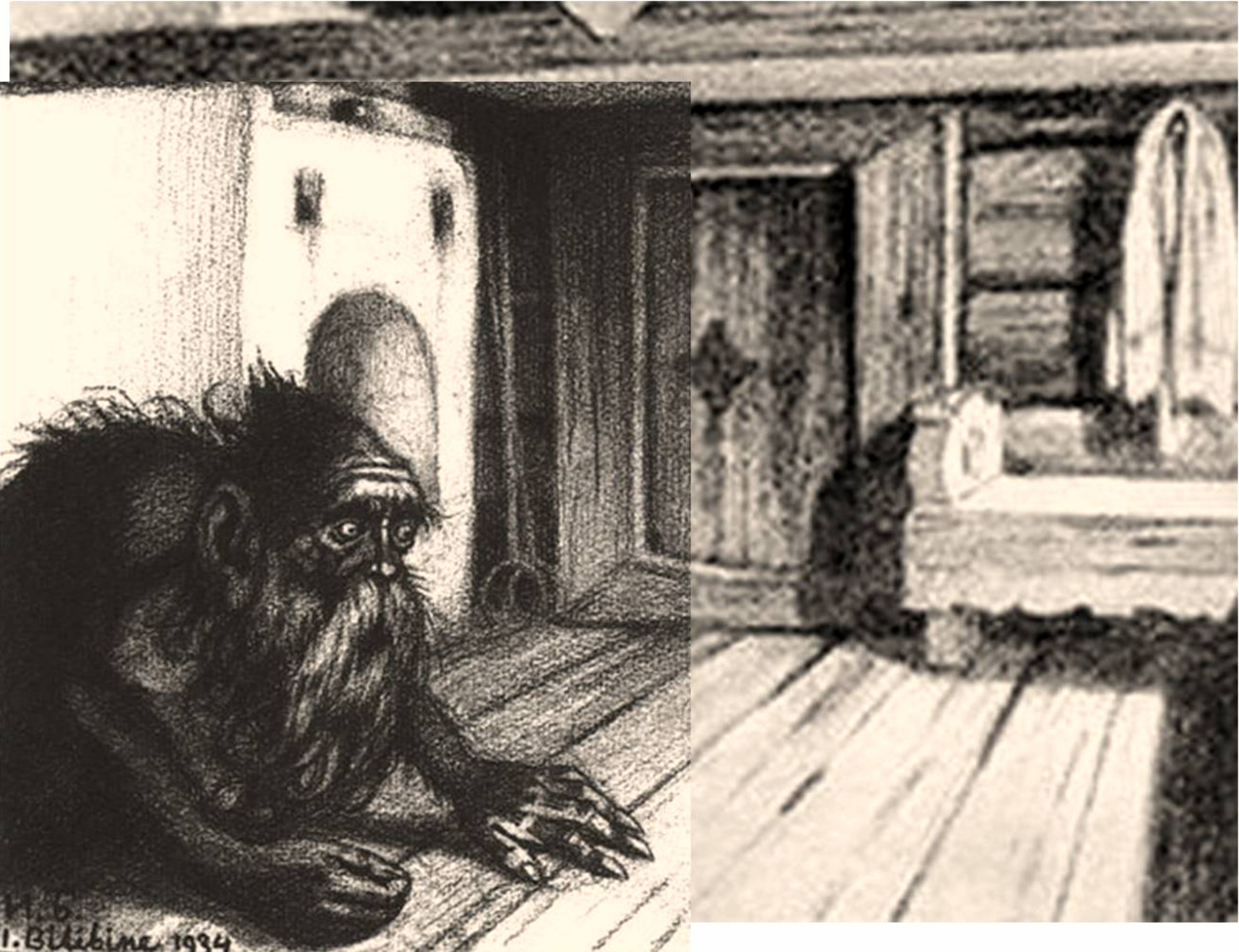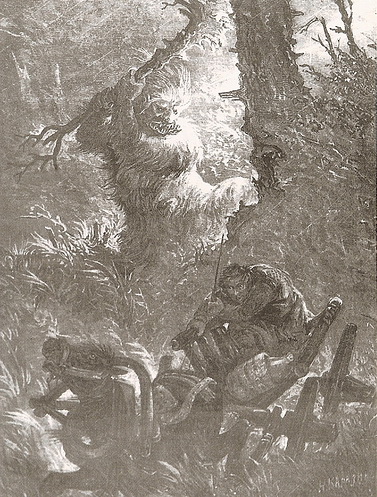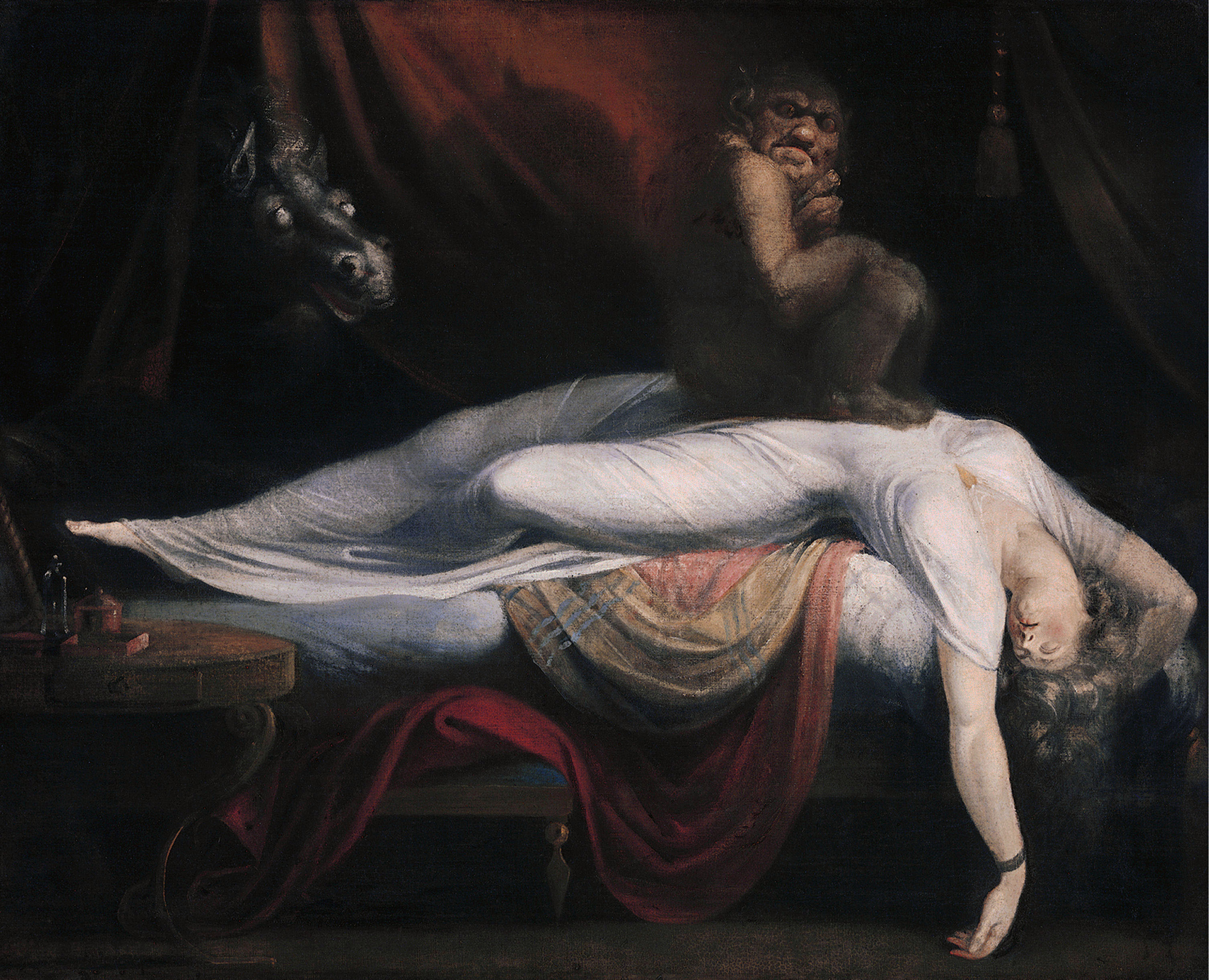|
Kikimora Palustris
''Kikimora'' is a monotypic genus of dwarf spiders containing the single species, ''Kikimora palustris''. It was first described by K. Y. Eskov in 1988, and has only been found in Finland, Norway, and Russia. Derivation of name When Eskov discovered this genus of sheetweaver spiders he used for it the name of the Russian bogeywoman (and personification of nightmare and sleep paralysis) Kikimora - specifically the type of Kikimora imagined to inhabit swamps (in further reference to the specific name ''palustris'' "of the marsh") and to be married to the forest-spirit Leshy. Sokolov, Yuriy M. (1971) 950 Russian Folklore. Translated by Smith, Catherine R. Detroit: Folklore Associates. pp. 26–404. . See also * List of Linyphiidae species (I–P) * Kikimora * Domovoy * Folklore of Russia Folklore of Russia is folklore of Russians and other ethnic groups of Russia. Russian folklore takes its roots in the pagan beliefs of ancient Slavs and now is represented in the Russian fai ... [...More Info...] [...Related Items...] OR: [Wikipedia] [Google] [Baidu] |
Monotypic Taxon
In biology, a monotypic taxon is a taxonomic group (taxon) that contains only one immediately subordinate taxon. A monotypic species is one that does not include subspecies or smaller, infraspecific taxa. In the case of genera, the term "unispecific" or "monospecific" is sometimes preferred. In botanical nomenclature, a monotypic genus is a genus in the special case where a genus and a single species are simultaneously described. In contrast, an oligotypic taxon contains more than one but only a very few subordinate taxa. Examples Just as the term ''monotypic'' is used to describe a taxon including only one subdivision, the contained taxon can also be referred to as monotypic within the higher-level taxon, e.g. a genus monotypic within a family. Some examples of monotypic groups are: Plants * In the order Amborellales, there is only one family, Amborellaceae and there is only one genus, '' Amborella'', and in this genus there is only one species, namely ''Amborella trichopoda ... [...More Info...] [...Related Items...] OR: [Wikipedia] [Google] [Baidu] |
Kikimora
Kikimora ( rus, кикимора, p=kʲɪˈkʲimərə) is a legendary creature, a female house spirit in Slavic mythology. Her role in the house is usually juxtaposed with that of the domovoy. The kikimora can either be a "bad" or a "good" spirit, which will depend on the behavior of the homeowner. When the kikimora inhabits a house, she lives behind the stove or in the cellar, and usually produces noises similar to those made by mice in order to obtain food. Kikimory (in plural) were the first traditional explanation for sleep paralysis in Russian folklore. Etymology Most sources link the suffix -''mora'' with the Proto-Slavic *''morà'' ('nightly spirit, bad dream') and the Proto-Germanic *''marōn'' (''id.''), as in the modern English nightmare. In Polish folklore, mora are the souls of living people that leave the body during the night, and are seen as wisps of straw or hair or as moths. Accordingly, Polish ''mora'', Czech ''můra'' denote both a kind of elf or spirit as well ... [...More Info...] [...Related Items...] OR: [Wikipedia] [Google] [Baidu] |
Spiders Described In 1988
Spiders (order Araneae) are air-breathing arthropods that have eight legs, chelicerae with fangs generally able to inject venom, and spinnerets that extrude silk. They are the largest order of arachnids and rank seventh in total species diversity among all orders of organisms. Spiders are found worldwide on every continent except for Antarctica, and have become established in nearly every land habitat. , 50,356 spider species in 132 families have been recorded by taxonomists. However, there has been debate among scientists about how families should be classified, with over 20 different classifications proposed since 1900. Anatomically, spiders (as with all arachnids) differ from other arthropods in that the usual body segments are fused into two tagmata, the cephalothorax or prosoma, and the opisthosoma, or abdomen, and joined by a small, cylindrical pedicel, however, as there is currently neither paleontological nor embryological evidence that spiders ever had a separate th ... [...More Info...] [...Related Items...] OR: [Wikipedia] [Google] [Baidu] |
Folklore Of Russia
Folklore of Russia is folklore of Russians and other ethnic groups of Russia. Russian folklore takes its roots in the pagan beliefs of ancient Slavs and now is represented in the Russian fairy tales._Epic_Russian_ �олше́бн_...s._Epic_Russian_bylinas_are_also_an_important_part_of_Slavic_paganism.html" ;"title="bylina.html" ;"title="�олше́бн ...s. Epic Russian bylina">�олше́бн ...s. Epic Russian bylinas are also an important part of Slavic paganism">bylina.html" ;"title="�олше́бн ...s. Epic Russian bylina">�олше́бн ...s. Epic Russian bylinas are also an important part of Slavic paganism. The oldest bylinas of Kievan cycle were recorded in the Northwestern Federal District, Russian North, especially in Karelia, where most of the Finnish people, Finnish national epic Kalevala was recorded as well. In the late 19th-century Russian fairy tales began being translated into English, with ''Russian Folk Tales'' (1873) by William Ralston, and ''Tales and Le ... [...More Info...] [...Related Items...] OR: [Wikipedia] [Google] [Baidu] |
Domovoy
In the Slavic religious tradition, Domovoy (Russian: Домово́й, literally "he oneof the household"; also spelled ''Domovoi'', ''Domovoj'', and known as pl, Domowik or Serbian and ua, Домовик, translit=domovyk) is the household spirit of a given kin. They are deified progenitors, that is to say the fountainhead ancestors of the kin. According to the Russian folklorist E. G. Kagarov, the Domovoy is a personification of the supreme Rod in the microcosm of kinship. Sometimes he has a female counterpart, Domania, the goddess of the household, though he is most often a single god. The Domovoy expresses himself as a number of other spirits of the household in its different functions. Etymology and belief The term ''Domovoy'' comes from the Indo-European root *''dom'', which is shared by many words in the semantic field of "abode", "domain" in the Indo-European languages (cf. Latin ''domus'', "house"). The Domovoy have been compared to the Roman ''Di Penates'', the '' ge ... [...More Info...] [...Related Items...] OR: [Wikipedia] [Google] [Baidu] |
List Of Linyphiidae Species (I–P)
This page lists all described species of the spider family Linyphiidae as of July 12, 2020, from I to P, of World Spider Catalog version 21.0 ''Ibadana'' ''Ibadana'' Locket & Russell-Smith, 1980 * '' Ibadana cuspidata'' Locket & Russell-Smith, 1980 – Nigeria, Cameroon ''Iberoneta'' '' Iberoneta'' Deeleman-Reinhold, 1984 * '' Iberoneta nasewoa'' Deeleman-Reinhold, 1984 – Spain ''Icariella'' ''Icariella'' Brignoli, 1979 * '' Icariella hauseri'' Brignoli, 1979 – Greece ''Idionella'' '' Idionella'' Banks, 1893 * '' Idionella anomala'' (Gertsch & Ivie, 1936) – USA * '' Idionella deserta'' (Gertsch & Ivie, 1936) – USA * '' Idionella formosa'' (Banks, 1892) ( type species) – USA ** ''Idionella formosa pista'' (Chamberlin, 1949) – USA * '' Idionella nesiotes'' (Crosby, 1924) – USA * '' Idionella rugosa'' (Crosby, 1905) – USA * '' Idionella sclerata'' (Ivie & Barrows, 1935) – USA, Mexico * '' Idionella titivillitium'' (Crosby & Bishop, 1925) – USA * '' Idionella ... [...More Info...] [...Related Items...] OR: [Wikipedia] [Google] [Baidu] |
Leshy
The Leshy (also Leshi; rus, леший, p=ˈlʲeʂɨj; literally, " efrom the forest", pl, borowy, leśnik, leśniczy, lasowik, leszy) is a tutelary deity of the forests in pagan Slavic mythology. As the spirit rules over the forest and hunting, he may be related to the Slavic god Porewit. There is also a deity, named ''Svyatibor'' (''Svyatobor'', ''Svyatibog''), who is mentioned in the beliefs of the Eastern and Western Slavs as the god of forests and the lord of the leshies. His functions were identical to those of the god Veles. The Leshy is masculine and humanoid in shape, is able to assume any likeness and can change in size and height. In some accounts, Leshy is described as having a wife (''Leshachikha'', ''Leszachka'', ''Lesovikha'' and also, sometimes, the '' Kikimora'' of the swamp) and children (''leshonki'', ''leszonky''). He is known by some to have a propensity to lead travelers astray and abduct children (which he shares with Chort, the "Black One"), which wou ... [...More Info...] [...Related Items...] OR: [Wikipedia] [Google] [Baidu] |
Swamp
A swamp is a forested wetland.Keddy, P.A. 2010. Wetland Ecology: Principles and Conservation (2nd edition). Cambridge University Press, Cambridge, UK. 497 p. Swamps are considered to be transition zones because both land and water play a role in creating this environment. Swamps vary in size and are located all around the world. The water of a swamp may be fresh water, brackish water, or seawater. Freshwater swamps form along large rivers or lakes where they are critically dependent upon rainwater and seasonal flooding to maintain natural water level fluctuations.Hughes, F.M.R. (ed.). 2003. The Flooded Forest: Guidance for policy makers and river managers in Europe on the restoration of floodplain forests. FLOBAR2, Department of Geography, University of Cambridge, Cambridge, UK. 96 p. Saltwater swamps are found along tropical and subtropical coastlines. Some swamps have hammock (ecology), hammocks, or dry-land protrusions, covered by aquatic vegetation, or vegetation that tolerates ... [...More Info...] [...Related Items...] OR: [Wikipedia] [Google] [Baidu] |
Sleep Paralysis
Sleep paralysis is a state, during waking up or falling asleep, in which one is conscious but is completely paralyzed. During an episode, one may hallucinate (hear, feel, or see things that are not there), which often results in fear. Episodes generally last less than a couple of minutes. It can recur or occur as a single episode. The condition may occur in those who are otherwise healthy or those with narcolepsy, or it may run in families as a result of specific genetic changes. The condition can be triggered by sleep deprivation, psychological stress, or abnormal sleep cycles. The underlying mechanism is believed to involve a dysfunction in REM sleep. Lucid dreaming doesn't affect the chances of sleep paralysis but some lucid dreamers use this as a method of having a lucid dream. Diagnosis is based on a person's description. Other conditions that can present similarly include narcolepsy, atonic seizure, and hypokalemic periodic paralysis. Treatment options for sleep para ... [...More Info...] [...Related Items...] OR: [Wikipedia] [Google] [Baidu] |
Genus
Genus ( plural genera ) is a taxonomic rank used in the biological classification of extant taxon, living and fossil organisms as well as Virus classification#ICTV classification, viruses. In the hierarchy of biological classification, genus comes above species and below family (taxonomy), family. In binomial nomenclature, the genus name forms the first part of the binomial species name for each species within the genus. :E.g. ''Panthera leo'' (lion) and ''Panthera onca'' (jaguar) are two species within the genus ''Panthera''. ''Panthera'' is a genus within the family Felidae. The composition of a genus is determined by taxonomy (biology), taxonomists. The standards for genus classification are not strictly codified, so different authorities often produce different classifications for genera. There are some general practices used, however, including the idea that a newly defined genus should fulfill these three criteria to be descriptively useful: # monophyly – all descendants ... [...More Info...] [...Related Items...] OR: [Wikipedia] [Google] [Baidu] |
Nightmare
A nightmare, also known as a bad dream, Retrieved 11 July 2016. is an unpleasant dream that can cause a strong emotional response from the mind, typically fear but also despair, anxiety or great sadness. The dream may contain situations of discomfort, psychological or physical terror, or panic. After a nightmare, a person will often awaken in a state of distress and may be unable to return to sleep for a short period of time. Recurrent nightmares may require medical help, as they can interfere with sleeping patterns and cause insomnia. Nightmares can have physical causes such as sleeping in an uncomfortable position or having a fever, or psychological causes such as stress or anxiety. Eating before going to sleep, which triggers an increase in the body's metabolism and brain activity, can be a potential stimulus for nightmares. The prevalence of nightmares in children (5–12 years old) is between 20 and 30%, and for adults is between 8 and 30%. In common language, the meani ... [...More Info...] [...Related Items...] OR: [Wikipedia] [Google] [Baidu] |
Bogeyman
The Bogeyman (; also spelled boogeyman, bogyman, bogieman, boogie monster, boogieman, or boogie woogie) is a type of mythic creature used by adults to frighten children into good behavior. Bogeymen have no specific appearance and conceptions vary drastically by household and culture, but they are most commonly depicted as masculine or androgynous monsters that punish children for misbehavior. The Bogeyman or conceptually similar monsters can be found in many cultures around the world. Bogeymen may target a specific act or general misbehaviour, depending on what purpose needs serving, often based on a warning from the child's authority figure. The term is sometimes used as a non-specific personification or metonym for terror, and in some cases, the Devil. Etymology The word ''bogey'' originated in the mid-19th century, originally as a quasi-proper name for the devil."bogy , bogey, n.1." OED Online. Oxford University Press, March 2021. Web. 23 May 2021. It may derive from the Mi ... [...More Info...] [...Related Items...] OR: [Wikipedia] [Google] [Baidu] |
.jpg)








